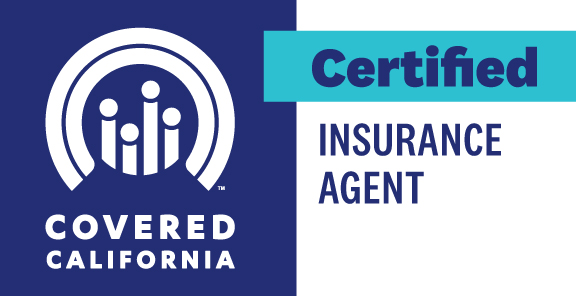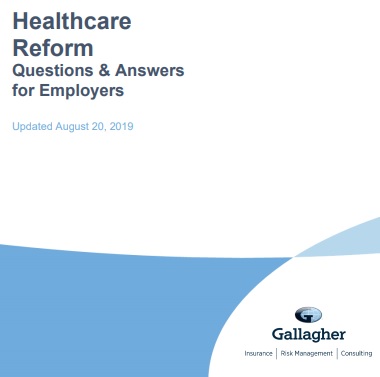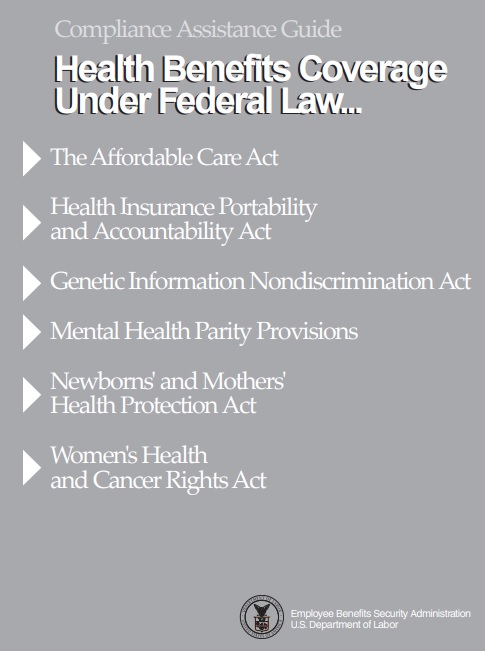Financial Impact – Health Reform, Premiums, Taxes & Fees
Financial Impact of ACA
Links
- Overview of ACA Taxes & Fees
- Check out the Millman Study 4.2013 it’s the most comprehensive report and explanation that I’ve seen. Here’s a 2 page summary from Blue Cross.
- Major sources of deficit reduction include:[199]
- higher Medicare taxes on the wealthy;
- similar fees on the healthcare industry such as manufacturers and importers of brand-name pharmaceutical drugs and certain medical devices;
- limits on tax deductions of medical expenses and flexible spending accounts;
- a new 40% excise tax on “Cadillac” insurance policies – plans with annual insurance premiums in excess of $10,200 for an individual or $27,500 for a family;
- a 10% federal sales tax on indoor tanning services;
- and spending offsets such as a reduction in Medicare reimbursements to insurers and drug companies for private Medicare Advantage policies that the Government Accountability Office and Medicare Payment Advisory Commission found to be overpaid (relative to government Medicare);[252][253]
- and reductions in Medicare reimbursements to hospitals that do not meet standards of efficiency and care. Learn More Wikipedia
Breaking News
HHS will now pay 100 percent of claims costs between $45,000 and $250,000 — an increase from the previous rate of 80 percent. The Hill 6.17.2015
Resources & Links
- Donald Care – American Health Care Act – Repeal Taxes – starting on page 68 Rev. 3.6.2017
- Forbes 11.7.2013 explanation of ObamaCare Charts – ACA – National Health Care Expedenture and the Uninsured
- IRS Summary of NEW taxes
- The limit of $6,350 for an Individual and $12,700 for a family out of pocket costs has been postponed for 1 year for some insurers. New York Times DOL FAQ’s Part of the justification is that some insurers have different parts of the coverage like Mental Health or Rx Drugs covered by other Insurance Companies. On the other hand CA has AB 639 pending to put limits in.
- Obama’s promise to save $2,500 to $3,000 Politico
- Restaurants adding surcharges so that they can get Health Insurance for Employees californiahealthline.org
Final Market Rules
Final Market Rules 45 CFR Parts 144, 147, 153, 154, 155, 156 and 158
All our Health plans are Guaranteed Issue with No Pre X Clause
Quote & Subsidy #Calculation
There is No charge for our complementary services, we are paid by the Insurance Company.
- We are authorized Brokers for Dental, Vision & Covered CA get instant quotes direct and in Covered CA with subsidy calculation for:
Watch our 10 minute VIDEO
that explains everything about getting a quote
-
- Our Quote Engine Takes all the complexity out of using pencil and paper to figure out the premiums per the Obamacare/ACA rules under CFR §1.36B-3 *
Risk Corridor – Risk Adjustment
- CMS: Insurers to make $10.3B in 2023 risk adjustment payments
- Our webpage on Risk Adjustment Fraud in Medicare Advantage
- The risk-corridor program was established under the Affordable Care Act to help stabilize the individual and small-group markets by offsetting insurer losses during the first three years of the insurance exchanges. The program, which expired at the end of 2016, was designed to discourage insurers from raising premiums because of uncertainty over who would enroll in their plans.The program works by collecting funds from profitable insurers, and paying out funds to health plans with losses that exceed a certain threshold. A similar program exists in Medicare Part D, which was created by Republican President George W. Bush.
- But in 2014, Congress passed a provision in the 2015 federal budget requiring risk corridors to be revenue-neutral. That meant that the CMS could only pay out what it takes in from health plans. That change led to a massive shortfall in the risk-corridor program. In October 2015, the CMS said it would pay just 12.6% of the risk-corridor requests for 2014, with the rest of the payments being pulled from 2015 and 2016 collections. Modern Health Care 11.14.2017
- California insurers have received nearly $1.2 billion through the Affordable Care Act’s reinsurance program, according to a Covered California analysis of a recent CMS report, Business Insurance reports (Geisel, Business Insurance, 7/6). The program requires insurers that offer exchange coverage to pay into a pool that can be used to reimburse them if they incur claims that exceed a certain threshold. In June, HHS said it will reimburse 100% of such costs between $45,000 and $250,000, up from 80% previously (California Healthline, 6/18). CA HealthLine 7.7.2015
- ACA risk adjustment payments are on the rise: CMS
Risk Corridor Litigation
- Risk corridor program” is an odd term that may be unfamiliar to those outside of the federal healthcare field. Essentially, the “risk corridor” concept is a way to share the risks between insurers and the Government when embarking upon a new health insurance endeavor. By sharing the risks, the Government intended to encourage more insurers to participate in the new ACA endeavor. The Government’s promise to reimburse certain revenue losses to insurers would allow the insurers to maintain health insurance premiums for consumers at a lower and more reasonable rate. The insurance companies voluntarily entered the program based upon the Government’s promised terms. actual 48 page ruling
- Maine Community Health Options v. United States
- The Supreme Court ruled 8-1 that the federal government has an obligation to pay insurers funds $12 Billion owed under the ACA temporary risk-corridor program. It reversed the judgments of the lower court and remanded the consolidated cases brought by four insurers for further proceedings. Modern Health Care *
- Appeals court rules that Trump violated the law when the Feds stopped paying the subsidies, however insurers are not entitled to the full amount as they raised premiums to cover the loss. Maine Community Health Options v. United States Modern Health Care *
- Trump freezes Risk Adjustment payments per July 7th 2018 announcement. The New Mexico ruling found fault with the formula used by the government to calculate the payments, saying it was “arbitrary and capricious.” But another district court in Massachusetts upheld the formula. * Modern Health Insurance * NPR * Larger Insurance Companies to be hurt the worst Modern Health *
- Payments started again! Modern Health Care 7.24.2018 *
- In Litigation 12.10.2019
- Blue Shield states in their 2017 Broker Cycle Guide that the loss of the reinsurance program alone adds 5% to the premiums!
- Worse than that, the Federal Government owes 12.3B!
- Court Rules $$$ not owed as ACA is supposed to be budget neutral. Modern Health Care 6.14.2018
- hat figure includes roughly $3.95 billion in payments to cover insurers’ losses in 2016 alone. The agency also owes insurers $5.8 billion in risk-corridor payments for 2015. That’s on top of the $2.5 billion shortfall for 2014 losses.
- olina won a judgement on 8.4.2017 for $52M from a federal court in Washington, DC actual 48 page ruling based on the ACA Risk Corridor program. Los Angeles Times
Health Coverage #Guide
Art Gallagher
Health Care Reform FAQ's
Understanding Health Reform
***********************************
Compliance #Assistance Guide from DOL.Gov Health Benefits under Federal Law
- Health Care Reform Explained Kaiser Foundation Cartoon VIDEO
- Choosing a Health Plan for Your Small Business VIDEO DOL.gov
- ACA Quick Reference Guide California Small Group Employers Revision 2020 Word & Brown
- kff.org/health-policy-101/
- Health Savings Accounts
Cadillac Tax – Repealed
#Cadillac Tax Repealed on Really Nice Employer Health Plans
- Cadillac Tax repealed by President Trump in December 2019 CIGNA * Very Well *
- The Cadillac Tax, set to begin in
2018– 2020 Word & Brown 8.20.2019 * CA Health Line 12.21.2015 as part of the ACA, is a 40% tax on benefits over certain thresholds. HRAs, HSAs, Major Medical coverage and other items are included in the coverage that counts towards this tax. The tax will hit insurance and related perks valued at more than $10,200 for singles and $27,500 for families. So for family benefits worth $30,000, the tax would apply to the $2,500 that’s above the limit. The administration has long argued it is a modest step to get health care costs under control. It “will affect only a small portion of the very highest-cost health plans — a total of 3 percent of premiums in 2013,” About one-third of employers will be hit by the tax in 2018 if they do nothing to change their plans 4.7.2015 Word & Brown from Politico CIGNA * - January 2017 – Senators Dean Heller (R-NV) and Martin Heinrich (D-NM) introduced S. 58, after Representatives Mike Kelly (R-PA) and Joe Courtney (D-CT) introduced H.R. 173, legislation to repeal the ACA’s Cadillac/excise Tax, which will impose a 40% excise tax on health plans that exceed certain cost thresholds beginning in 2020
- Health Net Update 1.19.2016
- Why Employers are really cutting benefits?
- Not the Cadillac Tax Los Angeles Times 8.27.2015
- Next Big ObamaCare Battle – Cadillac Tax CA Health Line 9.17.2015
- 4.29.2015 – Legislation introduced to eliminate Cadillac Tax
- 26 U.S. Code § 4980I – Excise tax on high cost employer-sponsored health coverage
- American Health Care Act – Donald Care retain the ACA’s so-called Cadillac tax on high-value plans but delay it until 2025 – page 85 3.6.2017 Revision
- Check out Group Supplemental Plans to avoid the tax!
- The Cadillac Tax, set to begin in
4.14.2016 Ways & Means Committee Hearing VIDEO – Transcripts Sound is missing for the 1st minute or two
Facebook Comments
- Someone posted this article on Facebook about the Supreme Court case awarding 12 billion to insurance companies… politico.com/supreme-court-rules-government-must-pay-billions-to-obamacare-insurers–
- Why do you think your comment about people that don’t have coverage during this pandemic, is relevant?
- I feel my comment about the uninsured on Facebook is relevant for several reasons:
- 1 The critique of President Trump and his opposition to ACA/Obamacare
- 2. “who had sicker customers than expected in the newly overhauled insurance marketplaces”
- Where did these “sicker” customers come from, if not the uninsured?
- Sure, there was COBRA and HIPAA but how many knew about it or actually applied?
- There was also Mr. MIP, but at $50 one time write up fee, how could a Insurance Broker afford to sell it, without going on Medi Cal himself?
- 3. lawsuits brought by three small insurers, including one that blamed the risk corridors shortfall for its collapse in 2016. Today’s decision will also benefit insurers who brought dozens of identical lawsuits in lower courts.
- I feel my comment about the uninsured on Facebook is relevant for several reasons:
- Many of these insurers, known as co-ops, shuttered in the law’s early years partly because they didn’t receive the risk corridor funds they expected.
- which helped insurers pay poor customers’ medical bills.
- Blue Cross pretty much went out of the market in CA in 2018
- These companies apparently foresaw the problems and immediately withdrew!
- Aetna
- Assurant
- CIGNA
- United Health Care
- Then to top it all off… Covered CA cancelled Grandfathered Plans that President Obama said you could keep, just so that they could get the previously insurance and healthy customers and bypass professional agents. biz journals.com/covered-california-contracts-required
- Covered California, which required insurers to cancel existing individual policies in order to qualify to participate in the federally subsidized exchange.
- it assures a large and balanced risk pool of individual and family plan subscribers.”
- potential deluge of sick people seeking coverage and not enough healthy ones to make the project actuarially sound.
- Peter Lee, Covered California’s executive director, said this week that that as many as 800,000 to 900,000 people may be affected by the cancellations, and other estimates put the number closer to 1 million.






